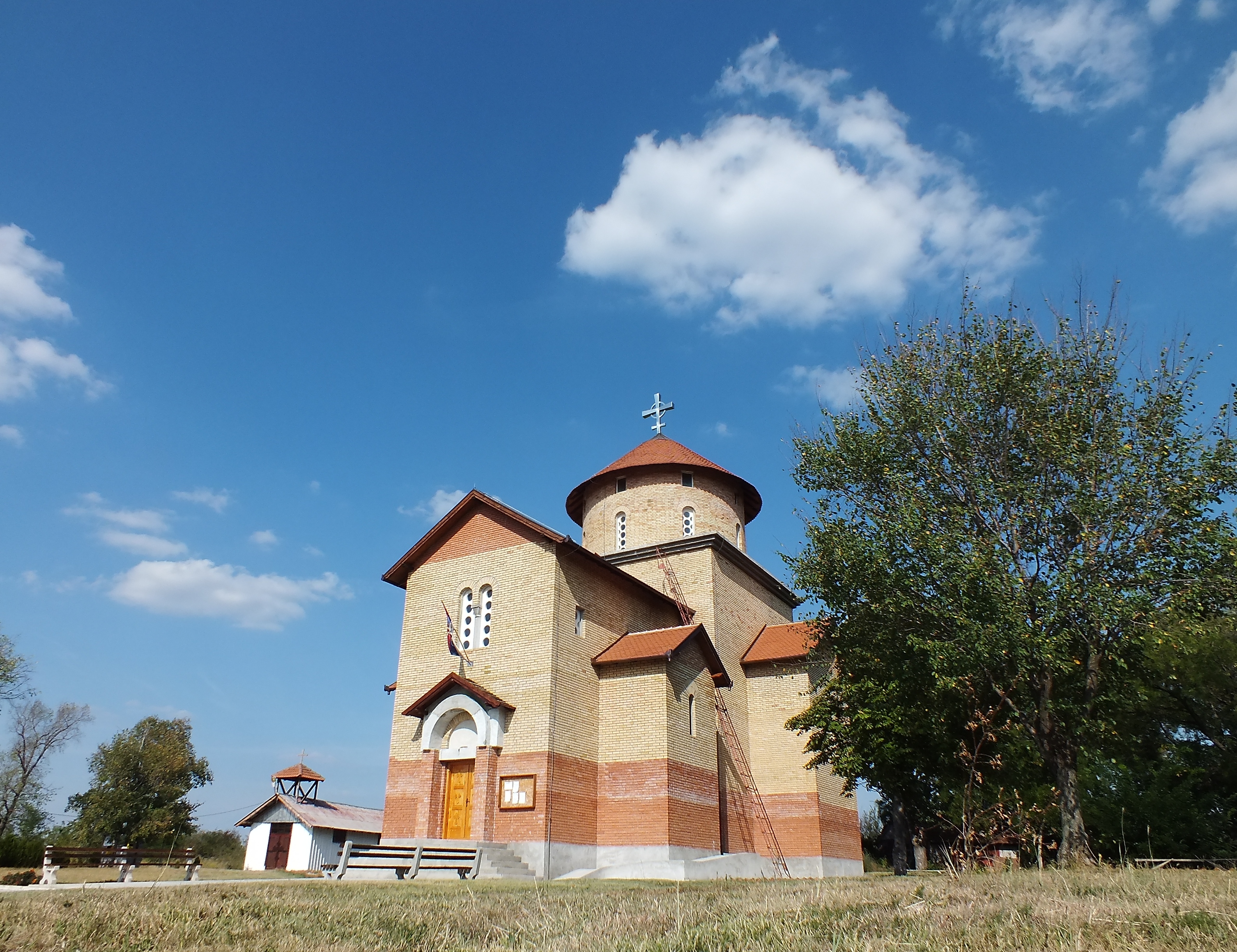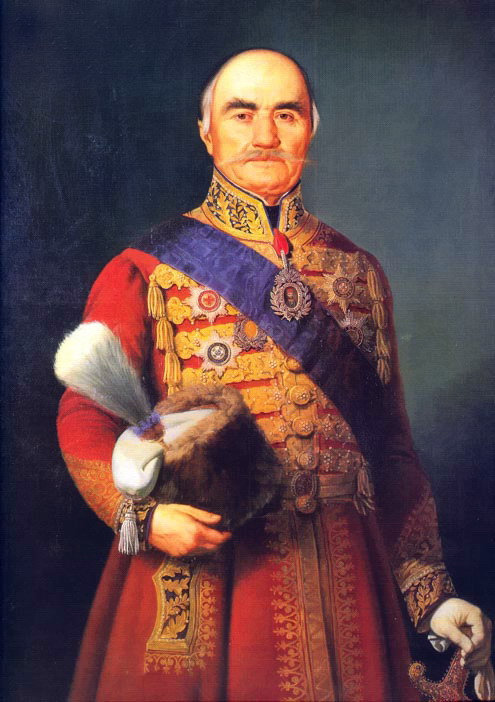|
Moravica District
The Moravica District ( sr, / , ) is one of eight administrative districts of Šumadija and Western Serbia. It is located in the central and south-western parts of Serbia. The name ''Moravica'' derives from the river Moravica, which forms the West Morava, both passing through the district. According to the 2011 census results, it had a population of 212,603. The administrative center of the Moravica district is the city of Čačak. Municipalities The district encompasses of the 3 municipalities and the city of Čačak: * Gornji Milanovac * Lučani * Ivanjica Demographics According to the last official census done in 2011, the Moravica District had 212,603 inhabitants. 53.8% of the population lived in the urban areas. Ethnic groups Ethnic composition of the Moravica district: Culture In the monuments heritage of Čačak a special place is taken by the religious building: monasteries and churches. The ten monasteries of the Ovčarsko-Kablarska Gorge are referred to as the ... [...More Info...] [...Related Items...] OR: [Wikipedia] [Google] [Baidu] |
List Of Districts Of Serbia
An ''okrug'' is one of the first-level administrative divisions of Serbia, corresponding to a "district" in many other countries (Serbia also has two autonomous provinces at a higher level than districts). The term ''okrug'' (pl. ''okruzi)'' literally means "encircling" and corresponds to in German language. It can be translated as "county", though it is generally rendered by the Serbian government as "district". The Serbian local government reforms of 1992, going into effect the following year, created 29 districts, with the City of Belgrade holding similar authority. Following the 2008 Kosovo declaration of independence, the districts created by the UNMIK-Administration were adopted by Kosovo. The Serbian government does not recognize these districts. The districts of Serbia are generally named after historical and geographical regions, though some, such as the Pčinja District and the Nišava District, are named after local rivers. Their areas and populations vary, ranging ... [...More Info...] [...Related Items...] OR: [Wikipedia] [Google] [Baidu] |
Montenegrins Of Serbia
The Montenegrins of Serbia ( sr, Црногорци у Србији, Crnogorci u Srbiji) are a national minority in the country. According to the 2011 census, there are 38,527 citizens of recent Montenegrin descent, Montenegrin Serbs, or ethnic Montenegrins in Serbia. They are the sixth largest ethnic community in the Vojvodina province. Geography The largest concentration of Montenegrins in Vojvodina could be found in the municipalities of Vrbas (24.79%), Mali Iđoš (20.83%), and Kula (16.34%). Settlements in Vojvodina with an absolute or relative Montenegrin majority are: Lovćenac in the Mali Iđoš municipality with 56.86% Montenegrins, Kruščić in the Kula municipality with 32.64%, and Montenegrins in Savino Selo in the Vrbas municipality with 38.20% Montenegrins. Formerly, the village of Bačko Dobro Polje in the Vrbas municipality also had a Montenegrin majority (According to the 1971 census, Montenegrins comprised 55.39% of population of this village, while ... [...More Info...] [...Related Items...] OR: [Wikipedia] [Google] [Baidu] |
Šumadija District
The Šumadija District ( sr, / , ) is one of eight administrative districts of Šumadija and Western Serbia. It is located in the central parts of the country. According to the 2011 census results, it has a population of 293,308 inhabitants, and the administrative center is the city of Kragujevac. The district is named after the geographical region of Šumadija. Municipalities The Šumadija District is divided into 6 municipalities and the city of Kragujevac. The municipalities of the district are: * Aranđelovac * Topola * Rača * Batočina * Knić * Lapovo Demographics According to the last official census done in 2011, the Šumadija District had 293,308 inhabitants. 64.9% of the population lived in urban areas. The ethnic composition of the district: Culture and history In the vicinity of Kragujevac stand several medieval monasteries, including the Annunciation monastery Divostin from the thirteenth century; the St. Nicholas monastery, believed to have existed at th ... [...More Info...] [...Related Items...] OR: [Wikipedia] [Google] [Baidu] |
Districts Of Serbia
An ''okrug'' is one of the first-level administrative divisions of Serbia, corresponding to a "district" in many other countries (Serbia also has two autonomous provinces at a higher level than districts). The term ''okrug'' (pl. ''okruzi)'' literally means "encircling" and corresponds to in German language. It can be translated as "county", though it is generally rendered by the Serbian government as "district". The Serbian local government reforms of 1992, going into effect the following year, created 29 districts, with the City of Belgrade holding similar authority. Following the 2008 Kosovo declaration of independence, the districts created by the UNMIK-Administration were adopted by Kosovo. The Serbian government does not recognize these districts. The districts of Serbia are generally named after historical and geographical regions, though some, such as the Pčinja District and the Nišava District, are named after local rivers. Their areas and populations vary, rangi ... [...More Info...] [...Related Items...] OR: [Wikipedia] [Google] [Baidu] |
Administrative Divisions Of Serbia
The administrative divisions of Serbia ( sr, административна подела Србије, аdministrativna podela Srbije) are regulated by the Government of Serbia ''Enactment'' of 29 January 1992,Government of SerbiaDistricts In Serbia/ref> and by the Law on Territorial Organization adopted by the National Assembly of Serbia on 29 December 2007. The "Serb" districts function in the areas where Kosovo Serbs live, but are only recognized by Serbs, while the "UNMIK" districts, which function in all of Kosovo, are recognized only by Kosovo Albanians. Historical regions * List of regions of Serbia * Historical administrative divisions of Serbia, Early Modern * Administrative divisions of medieval Serbia, Middle Ages See also * Districts of Serbia * Municipalities and cities of Serbia * List of cities in Serbia, Cities and towns in Serbia ** List of cities, towns and villages in Vojvodina, Cities, towns and villages in Vojvodina * List of populated places in Serbia, Popul ... [...More Info...] [...Related Items...] OR: [Wikipedia] [Google] [Baidu] |
University Of Kragujevac Faculty Of Technical Sciences
The Faculty of Technical Sciences (abbr. FTN; sr, Факултет техничких наука Универзитета у Крагујевцу, Fakultet tehničkih nauka Univerziteta u Kragujevcu) in Čačak is an independent department of the University of Kragujevac. Founded in 1975, the school nowadays offers academic and undergraduate studies, master degree studies, doctoral and specialist undergraduate studies. The faculty's programs cover Electrical Engineering, Computer engineering, Mechatronics, Information Technology, Informatics and Management. Besides that, the faculty offers the vocational studies as well. History The institution was established as Pedagogical-Technical Faculty with the assignment of developing teachers of mechanical and electrical engineering, and technical education. The Faculty was founded on 8 November 1975. In 1982, the Faculty extended the field of its activity by the admission of graduates to BSc in Mechanical and Electrical engineeri ... [...More Info...] [...Related Items...] OR: [Wikipedia] [Google] [Baidu] |
University Of Kragujevac Faculty Of Agronomy
The University of Kragujevac Faculty of Agronomy at Čačak ( sr, Агрономски Факултет у Чачку Универзитета у Крагујевцу, Agronomski fakultet u Čačku Univerziteta u Kragujevcu), located in Čačak, Serbia, is one of the educational institutions of the University of Kragujevac. The school's programs cover agronomy, food technology, fruit picking, viticulture, zootechnics and other aspects of the agronomy studies. The school offers undergraduate studies Undergraduate education is education conducted after secondary education and before postgraduate education. It typically includes all postsecondary programs up to the level of a bachelor's degree. For example, in the United States, an entry-le ..., Master degree studies, and doctoral studies. History The faculty began its operations on 9 October 1978. In 2018, it celebrated its 40-year anniversary. Notable alumni * Snežana Bogosavljević Bošković, Serbian politician Refere ... [...More Info...] [...Related Items...] OR: [Wikipedia] [Google] [Baidu] |
University Of Kragujevac
The University of Kragujevac ( sr, Универзитет у Крагујевцу, Univerzitet u Kragujevcu) is a public university in Kragujevac, Serbia. It is the oldest and the largest higher education institution in Šumadija and Western Serbia. The contemporary centralized university was founded in 1976 and today is organized into 12 constituent faculties. The university offers 118 study programs in the fields of natural sciences and mathematics, social and human sciences, medical sciences, engineering sciences, and arts. As of 2020–21 school year, there are around 14,179 enrolled students on undergraduate, graduate, doctoral, integrated and vocational studies. University of Kragujevac integrates functions of all faculties and organizational units (centers, institutes) in its structure, by implementing unique policy aimed at constant improving of higher education, and improving the quality of teaching, scientific research and artistic development of youth, introduction ... [...More Info...] [...Related Items...] OR: [Wikipedia] [Google] [Baidu] |
Lazarević
Lazarević ( sr-Cyrl, Лазаревић) is a South Slavic surname derived from a masculine given name '' Lazar''. It may refer to: *Branko Lazarević (born 1984), Serbian football player * Dejan Lazarević (footballer) (born 1990), Slovenian professional football player *Laza Lazarević (1851–1891), Serbian writer and psychiatrist * Lazar Lazarević (1838–1919), Croatian Catholic priest * Marina Lazarević (born 1980), Serbian actress * Milan Lazarević (handballer) (born 1948), Yugoslav handball player * Milan Lazarević (footballer) (born 1997), Serbian footballer * Milunka Lazarević (born 1932), Serbian chess player and journalist *Mladen Lazarević (born 1984), Serbian football defender currently playing for KV Kortrijk * Nina Linta Lazarević (born 1976), Serbian actress * Stefan Lazarević (1374–1427), Serbian Despot *Vojin Lazarević (born 1942), Yugoslav striker who played for SFR Yugoslavia *Vuk Lazarević (1380–1410), the younger son of Tsar Lazar See also ... [...More Info...] [...Related Items...] OR: [Wikipedia] [Google] [Baidu] |
Muslims (nationality)
Muslims ( Serbo-Croatian Latin and sl, Muslimani, Serbo-Croatian Cyrillic and mk, Муслимани) is a designation for a Serbo-Croatian speaking Muslims, inhabiting mostly the territory of the former Yugoslav republics. The term, adopted in 1971, designates Serbo-Croatian speaking Muslims, thus grouping together a number of distinct South Slavic communities of Islamic ethnocultural tradition. Prior to 1993, a vast majority of present-day Bosniaks self-identified as ethnic Muslims, along with some smaller groups of different ethnicity, such as Gorani and '' Torbeši''. This designation did not include Yugoslav non-Slavic Muslims, such as Albanians, Turks and Roma. After the breakup of Yugoslavia, a majority of Slavic Muslims of Bosnia and Herzegovina adopted the "Bosniak" ethnic designation in 1993, and they are today constitutionally recognized as one of three constituent peoples of Bosnia and Herzegovina. Approximately 100,000 people across the former Yugoslavia ... [...More Info...] [...Related Items...] OR: [Wikipedia] [Google] [Baidu] |

